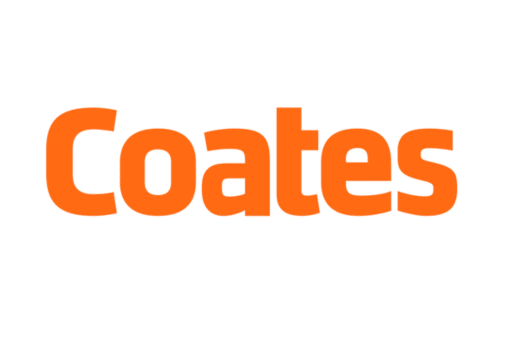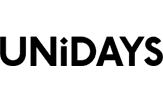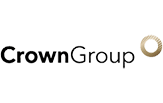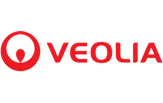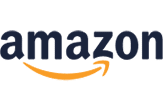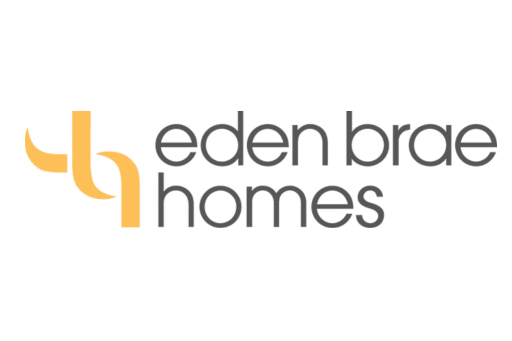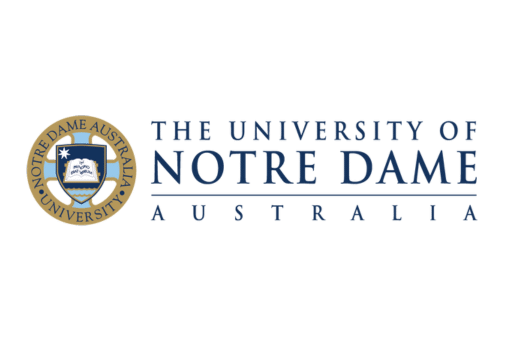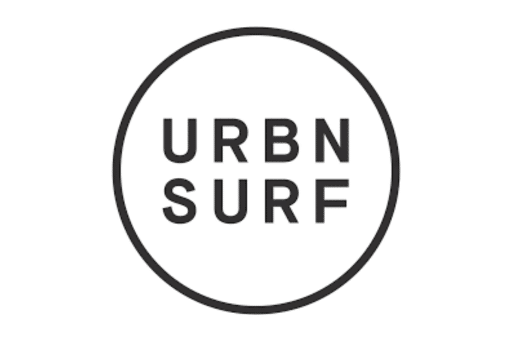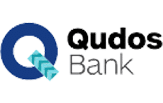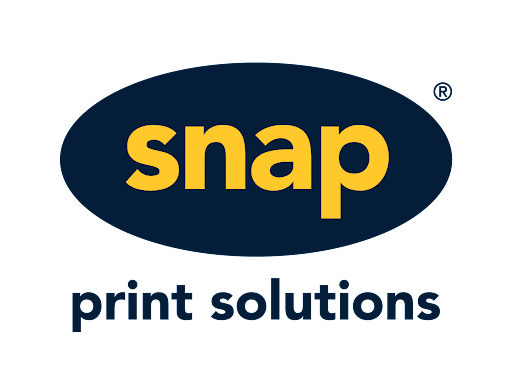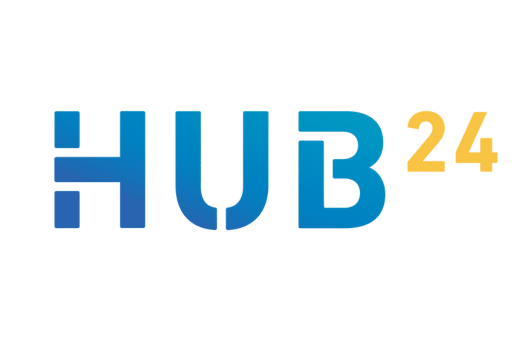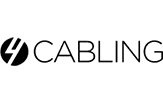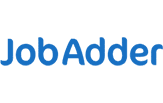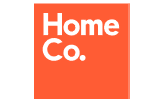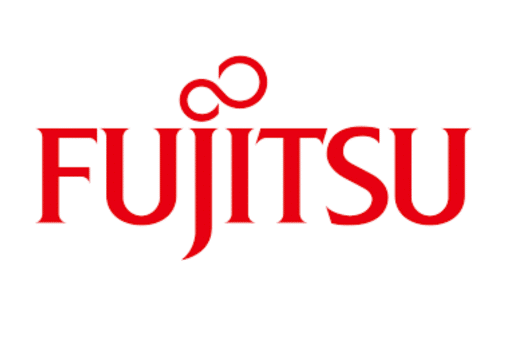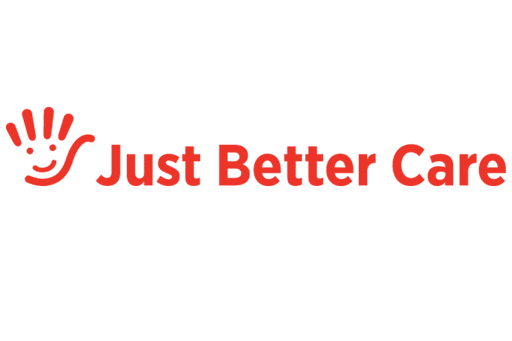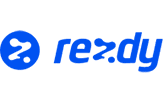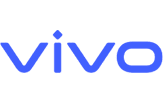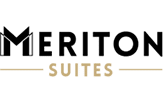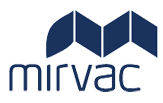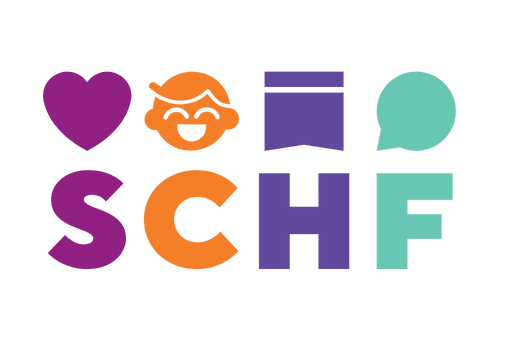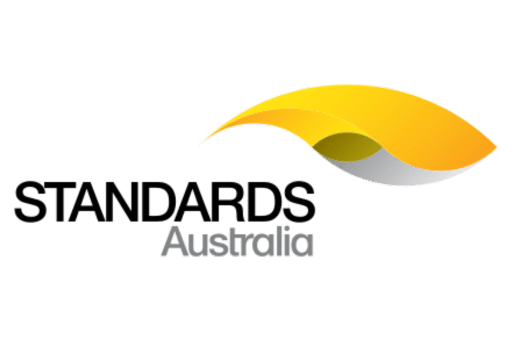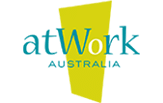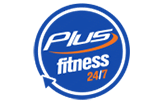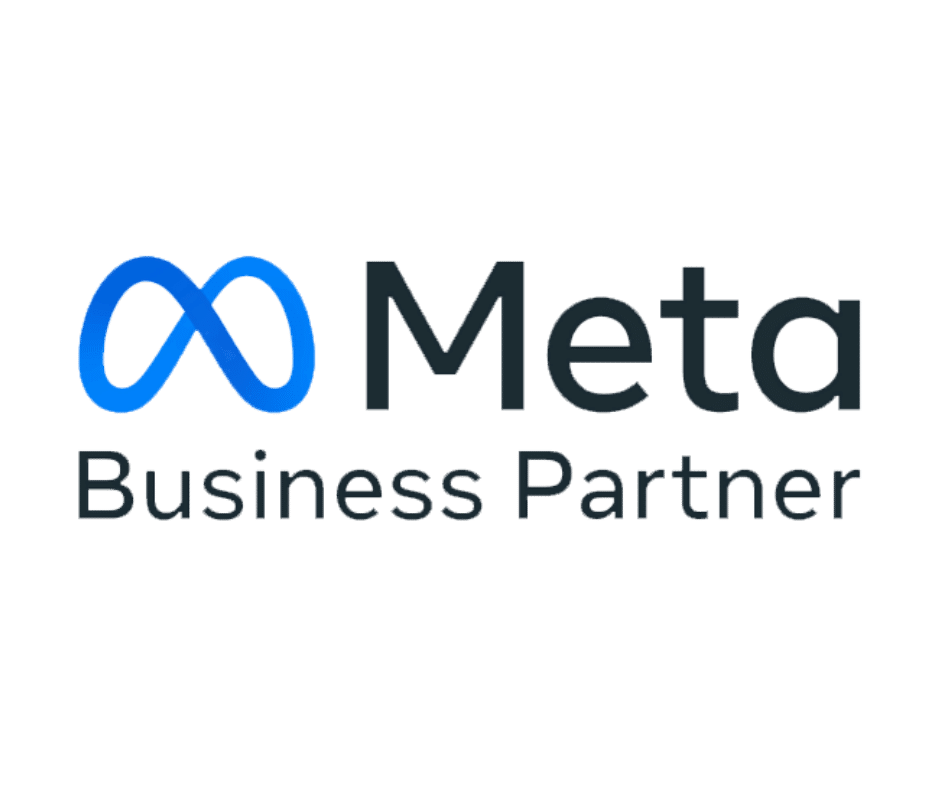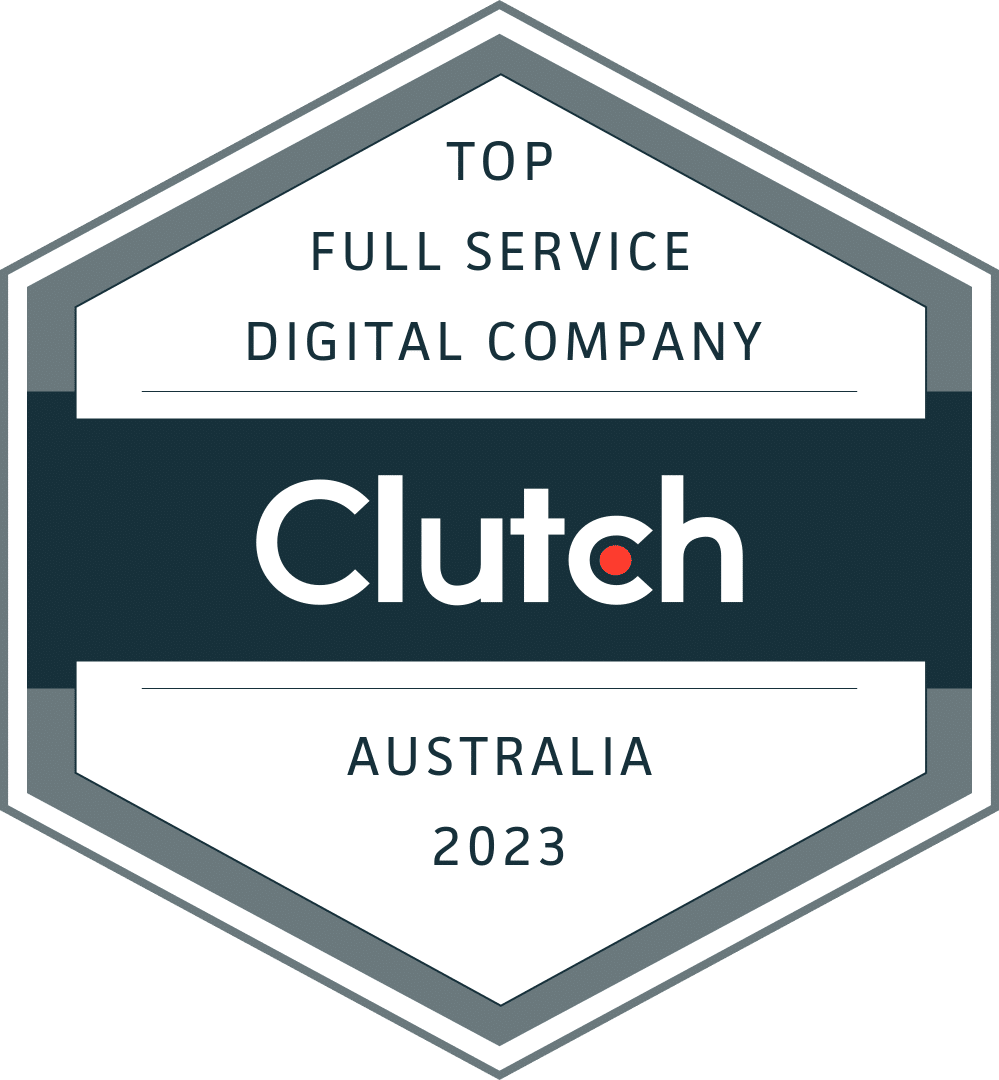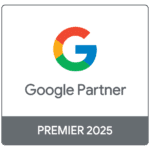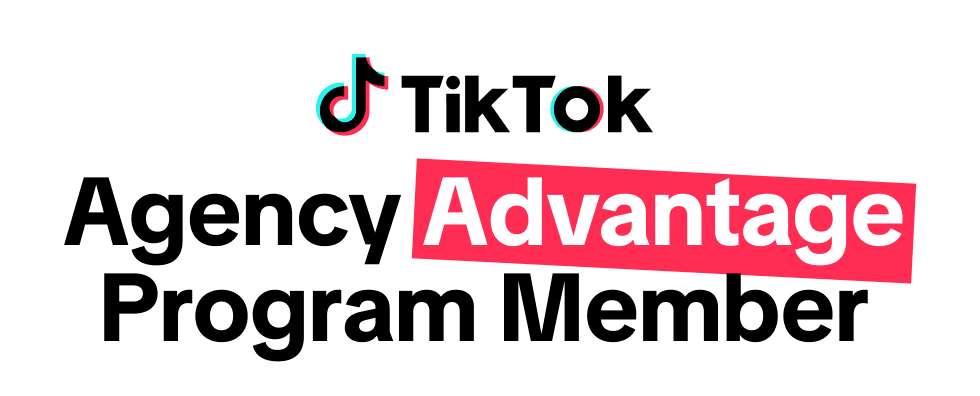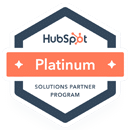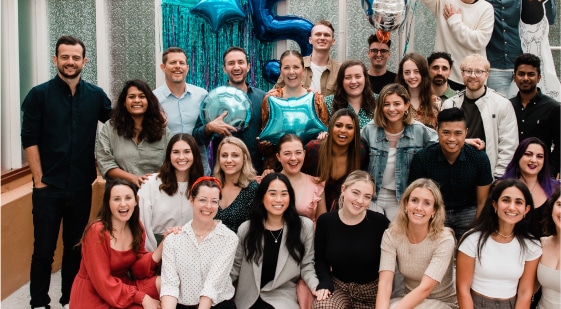Why Great Marketing Starts with Research w. Nick Palmer
Episode Description:
CEO of leading Australian market research company, Nick Palmer, shares the value in conducting research for your company. From segmenting, targeting and positioning, to conducting effective qualitative and quantitative research… this episode is full of practical takeaways.
Key Takeaways:
- Discussion around primary research versus secondary research.
- Discussion around quantitative and qualitative research.
- Acknowledging and understanding consumer needs as a key value in market research.
- Trying to sell what we can make vs trying to make what we can sell.
- Examples of quantitative research and qualitative research your company can benefit from.
- Segmenting, targeting and positioning.
- Practical ways to leverage the benefits of research.
Featuring:

Nick Palmer
About the Guest:
Nick is a career brand and communications researcher and strategist, and a recognised specialist in measuring advertising effectiveness, with global experience in agencies ranging from Millward Brown to Hall & Partners. Through his role as CEO at House of Brand, Nick relentlessly pursues breakthrough brand insights for clients, as well as leading the pioneering and development of the HOB offer. Nick holds a Bachelor of Science in Marketing from Lancaster University, UK. Follow him on LinkedIn.
Podcast Summary: Why Great Marketing Starts With Research
CEO of leading Australian market research company, Nick Palmer, shares the value in conducting research for your company on the Smarter Marketer Podcast.
The age-old definition of marketing is, ‘meeting a consumer need/want at a price’. But if you don’t know what the consumer needs/wants, then how are you going to offer them a solution?
This is where market research comes into play. By delving into the behaviours, attitudes, and interests of your ideal consumer, you are able to understand how you can best market your products and services to them.
There are various ways of accessing this information:
- You can analyse what brands people consider when they make a purchase.
- You can go out and ask them directly what they are searching for.
- You can study why users choose certain products over others.
It’s important to understand the market orientation. It’s not always about what’s right for the business, but what’s right for the market. And if you don’t do the research, how are you going to know what to sell?
If you’re facing the internal battle of; I know we need to do research, but I don’t know how to do it, read on. We’ve compiled a guide to completing research that will genuinely help you in forming a successful, results-driven marketing strategy.
What are the different types of market research, and how can I use them for my business?
Primary Research vs Secondary Research
Primary research involves collecting first-hand data that will answer a particular question, or problem that you are facing. On the other hand, secondary research (otherwise known as ‘desk research’), is when you are trolling existing information to suit your question/problem.
For smaller businesses, secondary research is exactly where you need to start. It is a much better use of time and resources, as all of the information has already been collected for you. While this information may not be perfect, it will most definitely be useful. The hard work as already been done for you, you are just re-analysing it, collating it, and morphing it to suit your given questions.
Quantitative vs Qualitative Research
There’s the common saying quality over quantity, but in market research this isn’t always the case. Choosing whether to conduct qualitative or quantitative research is highly dependant on your available resources, and the answers you need for your business.
Qualitative research including focus groups, 1-1 in depth interviews, or accompanied shops are great at engaging with your ideal consumer and building a deeper understanding of their interests and behaviours.
Alternatively, quantitative research methods such as surveys, or anything where you’re collecting numbers is effective when you need validation from a large portion of the market.
There is another bucket of research that isn’t as common and includes ethnography and cultural insights:
- Ethnography: You are observing your audience to gather information about their thoughts and behaviours
- Culture insights: How brands are representing themselves through codes including logos and colours, and determine their significance and impact
When do you do qualitative research vs quantitative research… do you do both?
In short, you conduct qualitative research when you want to explore and discuss, as it allows you to attain depth rather than range. With ‘qual’, you have the ability to talk to someone and gauge actual responses:
- What are the parameters in the market?
- What do we actually need to measure?
- Complete user testing to determine how your products and services are being received by your audience.
- Gain a deeper understanding of your audience’s decision-making journeys.
On the other hand, you complete quantitative research when you need validation, and require robust numbers to go off. You can go in with a hypothesis and can see whether the results confirm it.
Often, businesses complete qualitative research first to gather insights, and then validate these findings with quantitative data.
Or, you can use quantitative data for ‘fact-finding’, and then use qualitative methods to explore those results deeper.
Note: Marketers tend to only review their current customer base. You’ll only ever learn so much by looking at why the people who came to you already did. You need to look at why the people who haven’t come to you, haven’t.
Segmenting, Targeting and Positioning
It’s vital to segment your target audience when conducting market research, because not all consumers going to think, act and purchase in the same way.
- What are your market segments?
- Who are you going to target?
- How are you going to position your marketing?
Let the data tell you how to segment the market. Segmenting by values (customer service, trust, accessibility etc) are a very different audience than segmenting by verticals.
Practical Ways to Leverage The Benefits of Research
There are three main options to choose from when conducting research:
- Conducting research yourself: Survey Monkey is a great software that allows you to ask your audience the right questions, all you need is access to your target audience.
- External agency to conduct research: You can pay an external company to ‘get the questions right and implement the research’, but you will analyse the data yourself.
External agency to manage the whole process: This external agency will conduct the research, analyse and interpret the data, and provide strategic recommendations.
How big does an audience have to be to be valid statistically?
Your surveys should have a minimum of 100 respondents for the data to be meaningful. The more responses that you have, the greater validity the results have.
How can you measure how your brand is performing?
Sales and revenue are always a good indication of how your brand is performing.
To measure this with market research, it’s important to ask questions that allow you to track the emotional and rational perceptions of the brand. Then, you should be asking the exact same questions to the same sample makeup (not necessarily the exact same respondents) over time to track if there has been any growth).
If you’d like a second opinion on your SEO, Google Ads, or Paid Social Ads, Rocket can help. Call us on 1300 059 620 or contact us here.
Transcript
James Lawrence: I'm joined by Nick Palmer. Nick, welcome to the pod.
Nick Palmer: Thanks, James.
James Lawrence: It's great to have you here. So Nick is currently CEO at House of Brand, an Australian leader in market research, both quant and qual, as well as brand planning and brand experience. House of Brand works with some of Australia's largest brands. Prior to working at House of Brand, Nick moved from the UK with Holland Partners. In 2010, he came on board to help launch the business into the Australian market. He started off his career in London, where he worked for about 10 to 12 years, first with Millward Brown and later Holland Partners in the research space in Australia. Nick has worked with brands like Woolworths, Commbank, NRMA, Nine as well as a range of smaller businesses and startups. In the UK, he worked with brands like SkyTV, Mars, Google, Lloyds, Pepsi and many, many more. So when I thought of research, I thought of you. Nick. Thanks for spending some time with us.
Nick Palmer: Yeah. No worries. Looking forward to it.
James Lawrence: Good good good. So I think we were talking about it before we started recording. And you've got lots of big brand experience. And part of the reason I wanted to get you on was that you have also worked with some smaller brands, and I think the audience on the pod, we definitely have listeners from big corporates where I think there probably are big budgets set aside and probably a history of investing in research which is excellent. But there's also a lot of listeners, I think, working in silos, maybe in smaller marketing teams, sole in-house marketers, where maybe there isn't that experience and trust in research and knowing where to start. So and I think even from a Rocket viewpoint, clients or prospective clients come to us and say, I want to do SEO, I want to do Google Ads. And we kind of go, yep, okay, we'll do some analysis and we think we can get some wins for you, but us and the client probably aren't taking that step back and going, well, where should we play and who are we trying to target? So I think just wanted to throw it across to you to talk about research. What it is quantitative vs qualitative research?
Nick Palmer: You can get onto, let's call it accessible research, for those kind of smaller businesses, but smaller companies may be putting their first toe in the water in terms of research, because obviously there's some big budgets out there and some big scary research that gets done. But it doesn't have to be that kind of stuff. There's plenty of other kind of entry level options, let's call it; some information is a lot better than knowing nothing. But in terms of what market research is, it is anything that gives you information about the market or the consumers or the market you're trying to address. And then that kind of goes into what you call primary research, which is where you're actually collecting data specifically for that project or that task and secondary research, which is sometimes called desk research, which is where you are trawling existing information. And actually for smaller businesses, that is absolutely where they should start.
Nick Palmer: There's always some kind of information out there and it might not be perfect. It might not be exactly your audience, it might not be exactly your category, but it will still be useful quantitative or quant, and qualitative or qual. So in the kind of classic sense, qualitative is focus groups, one on one depth interviews and kind of assisted shops when you shop along with someone next to them and things like that. And then quantitative is surveys, anything where you're collecting numbers. So that's online now, but it could be face to face still. It could be the classic cliche of people with clipboards or it could be or more likely, tablets these days, or it could be telephone. But the vast majority of that is now done online, which means it's been answered on a mobile, or maybe a tablet or a laptop, or quite often a laptop.
James Lawrence: Does primary/secondary relate to qual/quat?
Nick Palmer: No. Primary research means that you are you are collecting the data specifically for this task, whereas secondary means this data has already been collected, and you are re-analysing it or collating it, or doing something with it to suit it for your task. But it already exists there. So that could be census data, that would effectively be what you'd call secondary research. You're using stuff as primary research means you're going out and collecting it yourself, which could be quant or qual. There is another bucket which kind of probably sits more on the qualitative end, but isn't actually either. And that is ethnography; cultural insights. So ethnography is where you're watching people, the real hardcore ethnography is going and living in people's houses for a year and working out what their lives are like.
James Lawrence: Yeah.
Nick Palmer: But there are much more kind of accessible versions of that. There's something called self ethnography where people record video diaries and stuff, but often, like there's somewhere in between, like an accompanied shop, for instance, is a little bit of both. You watch them shop the aisle and the supermarket and then you ask them questions afterwards. So it's kind of ethnography, but kind of not. And then Cultural Insights is where you decode culture. So you look at the way brands, culture, people, whatever are representing themselves through codes or through colors and cues and images and work out what those kind of dominant and residual and emerging codes are. But that's quite a significant and important part of the research landscape. The vast majority of it fits into the quant and qual bits.
James Lawrence: Yeah. Cool. And I guess where you're going with that, if you've got smaller budgets, smaller businesses, starting off with secondary I presume, because the content exists?
Nick Palmer: In most cases, that data is available for free. Occasionally you have to pay for some reports that exist, maybe you need to pay someone to interpret it for you. Because you haven't got the time or because it's just not your skill set. But it's still cheaper than going out and collecting your own data.
James Lawrence: I mean, it sounds like a really simple question, but why does this stuff matter? Like, why do these huge brands come to organisations like yours to do this research piece?
Nick Palmer: It's a simple question, but that doesn't mean that people don't grasp the concept and therefore don't do the research. It's all about knowing what consumers mean. One of the age old definitions of marketing is meeting a consumer need at a price, right? Or a consumer want or need at a price. But if you don't know what the consumers need or what they want, then how do you know how to meet it? That said, it's kind of basic level. Now there's various different ways of accessing that. You can go and ask them; what are you looking for when you buy insurance or whatever? But you can also analyse which brands people are considering and then look at what they know about those brands, what they think about those brands, and you can connect those dots. So it's all still fundamentally helping you understand how do we meet consumer wants and needs.
Nick Palmer: So you've done the Markowitz, and he always talks about market orientation, which is not about thinking what you're doing with the business and what's right for the business, but what's right for the market, because that should lead what you do as a business. One of my clients in the UK used to talk about that. The business had shifted recently from trying to sell what we can make to trying to make what we can sell, and that was very much about factory utilisation; we've made this version. We can also make this version, whether just by turning one button in the factory. Let's try and sell that versus, well, there's no consumer need. You're not going to sell it. But if you don't do the research, how do you know what the consumer needs? The Richard Branson's of the world. Or these people who kind of don't do research and stuff, all of whom do, by the way, including Steve Jobs and Apple used to do huge amount of research.
James Lawrence: That's where my head was. That was where the next line of questioning was going to.
Nick Palmer: I've seen some of it happen. And those guys, it's all on gut instinct and things like that. I have a good intuition of what consumers want and things like that. It's like, well, maybe you do, but there are not that many of those people in the world, and it's a bit of a risk. Why don't you spend a little bit of money and find out if you're right or not? And I know that's the battle a lot of people face internally as well; I know we need to do research, I need to convince other people in this organisation that we need to do research because they've never done it before. They think they either know or sometimes there's some hard truths they need to learn. And it's just the moving from that myopic inward view of the business. Oh, everyone knows who we are, don't they? Isn't it clear that we do this kind of stuff to well, actually, what do consumers really think about you? Have they heard of you? Are you meeting a need? Are you solving attention etcetera?
James Lawrence: It does feel that we're moving increasingly more towards a world where businesses that don't put the customer need at the front of the business are the ones that are struggling. And on that, the case study of Jeff Bezos and Amazon, where essentially the whole approach to that business from the ground up has been about customer experience and doing the entire business has been essentially reverse engineered around customer need-
Nick Palmer: It's probably always been the way really, it's just there’s now ever increasing amounts of choice and in all sorts of way. One of the things and this has changed massively in the last ten years, 12 years now, since I've been in Australia; when I got to Australia, I heard someone else say that it finally dawned on them like, oh, that's weird. Not because I'm particularly clever, but just because I thought it was very obvious straight away that the reason Australia is so far behind on some of that stuff, was because it's a it grew up with duopoly. You'd have a dominant brand in each state who didn't even really a monopoly. And then started having to having to compete with each other. And if there's no consumer choice, there's no drive to do better or there's no drive to whatever do better means. So do better could be better products, or it could be being a better corporation.
Nick Palmer: And, you know, from an ESR point of view or any of those kind of things, in the lack of competition and there's no drive to be better at what you do. And that has changed. And obviously the digital world, and particularly post-Covid, where suddenly everyone's competing with the whole world; universities are a really good example of if suddenly everyone's online learning, then why would I go to University of Sydney? When I can online learn with whatever Harvard, MIT? So that's been really, really interesting. But you've got to know what your competitors are doing as well. I think that's another part of it. The market orientation thing is knowing how your competitors are better, serving the needs of the competitors of your customers as well, and also understanding that it's this kind of an expectation transfer.
Nick Palmer: You mentioned Amazon. Unfortunately a lot of the expectations are transferred from Amazon. Amazon taught us that we can get a package tomorrow. Today if you're in the US that's those kind of expectations. People who are kind of late to the party with an app or a loyalty scheme or whatever, and they're like, oh yeah, but competitors don't have one, or it's better than what our competitors do. It's like people don't care. They don't think in the silos that you think in. They expect your website to work, as well as the best websites out there in, in the world or in their world, not the best fashion retailer or the best online wine store or whatever. That's not where the expectations are set. In our world, we very rarely get the opportunity to benchmark the brands we work for against that wider universe, because they just don't. We just don't have the bandwidth in there. But when we do qualitative work where we're actually having discussions with people, that's where that stuff kind of comes out. Who's doing this best out there? They don't talk in the silos that we want them to necessarily.
James Lawrence: That kind of leads into my next question. So when do you do quant? When do you do qual? Do you do both? What are the respective kind of pros and cons?
Nick Palmer: Good question. I mean the ‘do you do both’ is an interesting one, broadly speaking. You do qual when you want to discuss and explore and get real depth and be able to probe on stuff, and you do quant when you want robust validation sometimes or just robust numbers to go off. Sometimes in organisations, unfortunately, you can't because the business needs numbers, because in order to plead your case or whatever, they need to see some facts based on a large number of people. That's not necessarily a bad thing, but it's just occasionally projects get steered towards quant when actually the objectives better answer with qual. So qual you have the ability to talk to someone. You have the ability to ask why did you say that? Obviously in a survey you can ask why did you say that? But you can’t respond live to what they're saying. The main thing with quant as well is that you need to know what questions you want to ask. You need to know what are the parameters in the market, what are the things we need to ask about and measure. Whereas qualitative, you can kind of go in with some hypotheses maybe, but you can also start some springboards if you like, and then you can go from there.
Nick Palmer: I mean, the kind of classic uses of qual; concept and communications development. So you might have an early form of an ad and you want to make it better or you want to do user testing, which you can't do quantitatively, but some of that tactile, sensory kind of testing, you want to get a deeper understanding of journeys and things like that. So the decision making journey from deciding - it might be a credit card to actually getting a credit card - it's not linear, it's snakes and ladders, as people often refer to that kind of stuff. We really need to explore and get that depth and that color. And then so often you'll do qual first and then validate it with quant. I have done stuff the other way around as well, where you use quant to do a bit of what I kind of refer to as fact finding. So there's some hypotheses in the business. Let's just work out, broadly speaking, what they look like and then use the qual to deep dive on those things. And then sometimes you even do qual - quant - qual. So you do some exploratory qual, you validate it, you quantify it, and then you come back and once you've worked out, okay, this is the product to go for. Maybe this is the segment we're going to target or whatever. Then you do qual afterwards to put depth around it.
James Lawrence: Would big businesses like the big household brands that you - not speaking to any of them specifically - but would they be doing both all the time?
Nick Palmer: Yes. It's basically yes. Most of them will have ongoing brand tracking programs, which is what we do a lot of. So that's what we do with Woolworths and CBA and places like that where day in, day out, basically you are out there asking out there surveys, but there are consumers answering surveys about their brand, and you're collecting that and analysing it monthly or quarterly or whatever you're doing. So that's always ongoing. On top of that, they'll have lots of ad hoc projects. The specific tasks that will be happening quantitatively or qualitatively. Very few people do ongoing qualitative. It does happen where you have a regular fortnightly focus group or whatever, and you just basically throw whatever you want into it. So there are a few brands out there that do that, but it's pretty rare. Most qualitative is very kind of focused on a specific thing. The biggest brands are definitely doing both plus possibly ethno and cultural insights and things like that. When you get into smaller brands, it really depends on levels of knowledge already within the business about their audience. So if you really don't feel like you don't know much about your audience, then that's when qual can really help you in terms of having those conversations.
James Lawrence: We're more kind of going with that. It's a good coverage of the two areas as it relates to big brands, right? An airline or a bank or whatever. And I'm kind of thinking, okay, what about Rocket? So we're a 50 person digital marketing agency working with upper end of small business into mid-market, playing with some enterprise clients as well. Generally when we're putting our marketing together, we're trying to speak to marketers, right? They're the ones that are making the decisions around engaging an SEO provider etc. If I came to you and said, hey, how can you help us? And keeping it, you know, we're not a huge business, so the budgets aren't going to be vast. What would your thought process be like? How would you say we should use market research to help us better market ourselves?
Nick Palmer: Most people will come to us with some kind of objective or task in mind rather than just, hey, I want to do some market research. But it does happen. It tends to happen more when someone has told them you need to do some market research and they go, okay, I'll go and get one of those then. But that doesn't happen very often. Small businesses because the chains aren't there, they'll tend to come with us with a problem. Some people come to us with; I need to do X, but most people in those situations will go, I need to answer this question. I have this problem I need to solve. And then we'll work out what the best solution for them is. But to take your example, I think it depends. So for instance, if you wanted to know; where is our traction highest. Where is our next best target? Where is our opportunity great and where should we not touch? Because we don't we don't offer what they want. Or there's another competitor who's got their area sewn up, you'd want to do some research.
Nick Palmer: You can probably do it relatively cost effectively. You can do a full blown segmentation, which is where you go out and you totally understand the market and you work out how the market is differentiated and therefore what segments are in it. But that's tends to be quite costly. We've done that for startups and scale ups quite successfully. And where we often do that is where a business has grown to a certain size just organically doing what they know how to do and getting to a point. And then they get an extra round of funding or something, they need to push the business further. How do we get beyond the low hanging fruit? We've done very successful targeting in this area of the market - is there a whole area that should we stick to? Should we go over here? That kind of thing.
James Lawrence: I actually find that probably correlates with when a lot of clients will come to us where they've built some kind of digital footprint, they've spun up Google Ads, they've run some SEO, they've run certain campaigns in paid social, whether it's LinkedIn or Facebook, and they kind of start to tap out. They get funding and the funding is predicated on growth. And can the growth happen in Australia? It's kind of an interesting probably similar trigger point for both of us.
Nick Palmer: Exactly. We've got to a point, how do we get further and we're not going to get further by just continuing to do the same thing. And that's where people have to stop looking at - because that's where the danger is; people look at their current customer base, understand that kind of stuff. But you'll only ever learn so much by learning why the people who came to you already came to you. You need to know why other people haven't come to you yet. Which might be just because they're not aware of you. But it could be they are aware of you and you don't meet their needs. And I guess that's where it's kind of useful. Is it that people don't know about us? Is that they know about us, but they're not they don't think we're right for them? We're not on their consideration set? Are we on their consideration set, they're just not choosing us? Are they choosing us, but they're not coming back to us? All of those kind of things. So if you build a funnel like that, and that you can do relatively cost effectively because and then you've got a really good basis of here's the task at hand here, here is how we grow most; It's oh God, everyone is aware of us, likes us, or considers us. We just need to get out there more versus oh no, we've done the job of making people know that we exist. They just aren't thinking that we're relevant for them. So that's where we need to focus. That is absolutely the kind of thing we can do.
James Lawrence: Is that the way you phrase that around, it's not about looking back at your existing customers to find out where the next ones are coming from, it's looking at the market as to the ones that didn't go with you, what do you think resonates with us? I think we're guilty of that ourselves. We'll look at the clients that we love working with the most and go, let's go find more of them. Where I hear a lot of our clients talking, it's kind of our customers and the 80/20 rule or whatever it might be. But is that is that kind of one of the really strong use cases or arguments?
Nick Palmer: Definitely. It may be that there are lots of other customers who are just like your customers out there that you haven't tapped into yet. But why? It could simply be that they haven't heard of you. And once they have heard of you, they too will see their light and come over to you. But it's more likely to be something else. Let's put it another way, there's a reason the customers you've already got have found you and like you and are with you. And so what's the difference between those customers and the other customers? That's definitely a key use case. How do we push on? Because we've soaked up everything we're going to get from this pool of customers. We know what they like and why they came to us. If we just go out and tell other people about that stuff, then we're only going to get so far. It could be that that's really powerful, though, you know? And obviously testimonial marketing and all that kind of stuff and reviews work in that space. That is basically what all of those things are doing; trying to find people who are like them to make it feel like it's relevant to them. But that just gets harder and harder and harder. By laws of probabilities and probability and statistics.
James Lawrence: How does it work in terms of developing personas? And who are these portraits of the types of people we're going to build, to try to market to? Is the work that you're doing, does that then inform elements of those kind of persona developments?
Nick Palmer: Yes, often it does, but it doesn't have to. Sometimes clients come to us with their own ideas of what these personas or segments or cohorts are, but what they really need to know is understand them more. So it could be verticals. For instance, they might come to us and go, these are the whatever the six big verticals; we're doing well amongst these two, but not amongst these four. Let's size those verticals. I mean, obviously there'll be some kind of information available to broadly size those verticals in terms of their need of the services that we offer and then profile them. What are the key drivers for that cohort versus that cohorts? So the really good golden rule to always go back with the marketing and segmentation targeting positioning in that order. So you segment the market, then you work out who you're going to target. And then how do you position against them.
Nick Palmer: So some people come with a market already segmented. They need to know how to target them and then what the positioning should be. Some will even come with; we've decided we want to target this segment. How should we position them? Sometimes you come with nothing. That's when you have to let the data tell you how to segment the market. Because without naming any names, a startup B2B finance company we worked with, quite successful Australia startup, the way they could work, where they'd seen success and things like that, some of those things existed across multiple verticals. And so what we did is produce kind of attitudinal segments which definitely had vertical skews to them, but which are based on the type of people in the decisions they're trying to make. So some people, what they really cared about is security and I'm not going to lose my loan, etcetera, etcetera. Other people wanted transparency. They wanted to be able to see where they were. Other people wanted customer service. And that doesn't necessarily align with verticals. That aligns with people. The same type of person could be working in a hairdressers or a florists or a restaurant. So that's where you kind of creating these personas and then go; we should target these personas and this is how we should know segmentation. We should target these ones. Here's the message to these people in order to make us successful with those guys.
James Lawrence: We'll often have people approach us saying; I want to do SEO or I want to do Google Ads. And it's like, yeah, but the types of people that you're trying to move aren't behaving in a way where that activity is actually going to do anything for you. There’s the yeah, definitely the marketer of me saying you should be doing outdoor or you should be doing whatever else, because they're already executing on this kind of tactical basis. They haven't actually taken a step back to go, well, who are we trying to move?
Nick Palmer: Yeah, that's right. I mean segmentation, tiering, positioning. And then it's only after that that you get into execution. And how do we get the message out to these people?
James Lawrence: It makes it a lot easier for us to then execute when we've got those kind of building blocks presented to us. I think that's a really good overview of quant vs qual. We obviously haven't dug too deep into the actual tactics that you are operating within, but that’s good for any marketers working in bigger businesses with budgets for research. Then how's a brand? Great doing X doing Y. I know a lot of listeners, as I kind of touched on when we kicked off are either sole in-house marketer in a business, small team of four, maybe working really closely with a business owner who just has no understanding. I know who my customers are. Go and do X. What are some just really practical ways of going about this? Like how do you do research that actually might be beneficial? Can you do it yourself? Can you engage with potentially businesses like yours or similar ones where you might not have hundreds of thousands of dollars for research pieces, but practical ways to, I guess, leverage the benefits of research?
Nick Palmer: There's the secondary reason, the desperate search we talked about before, you can do that yourself. Maybe lots of your listeners have heard of SurveyMonkey because it's kind of the phrase that means a do it yourself survey. There is a lot of different platforms out there. You can do that through millions of them, in fact. But what you want to ask and, and how to ask it, or you have a good enough idea how to how to ask it? All you need to do is get access to people. And some of those platforms can help you get access to those by sample, basically, which is how we do it. Most of our research runs off research panels, which are collections of people who have agreed to take part in research. And it's how all of the big brands do it, as so small brands do it. It's just the way these things are done.
Nick Palmer: But if you feel like you have enough of a grasp, or you have so little budget that you have no other have no other option, you can do it. The next kind of step up from that is paying for someone to do that for you, you're happy to just take the data, so you need someone to help you maybe get the questions right and implement it. Actually put it out there and run the fieldwork, so to speak. But you're happy to analyse the data yourself, so that can be pretty cost effective so an agency like ours can add value. We can help you write the questions better. If you've got a fairly good idea, then you might even be able to go to someone else who can do that for you, but you might as well do it yourself then. The next stage up is where we're actually analysing the data as well. And even in that, I guess you could have a version where we're basically charting up the data, putting it in slides and giving it to you.
Nick Palmer: We're not adding a huge amount of value there. Where you really get value is when we interpret it, tell you what to do with it, tell you what we would do, tell you what you know, help you with the strategic recommendations and things like that. So there are very much kind of entry level entry budget versions. And coming back to what I said earlier about some information is always better than no information, as long as it's not misleading information, that is. But and I have a phrase about all data is representative of something. You just need to be aware of what it's representative of so you can take data from your customer. You could send a survey out to your customers, for instance, but just know that it's your customers, and know that it's also your customers who are most likely to respond, who are the ones who like you most, or the ones who hate you most and for some reason still with you. But as long as you go in with eyes wide open, that's okay. It's only going to tell you so much.
Nick Palmer: But you know what it's going to tell you. It's when people misrepresent that as, there's a one of those great Tom Fishburn cartoons around, but around 99% of the people who responded to our survey said they like doing surveys. Just be aware of who you're talking to. But there are some very kind of entry level ways you can do stuff. Omnibuses, which is where you pay to put a question on a survey that goes out to a representative audience. You're paying 1 or 2000 AUD per question kind of thing, $2,000 per question, probably. So if you know what you need to ask and you can get some use out of a general audience, then that can be quite useful.
James Lawrence: And how big? Like how big does an audience have to be like in terms of qualitative research to, to be valid statistically?
Nick Palmer: So there's two ways of answering that. So in terms of sample sizes, anything you want to do, surveys, that are going to an absolute minimum of 100 people. That's like a real real minimum
James Lawrence: 100 responses or 100 sends?
Nick Palmer: 100 responses. So you want to be working with data that represents 100 people. And then it's kind of almost logarithmic after that. So if you double that you get a lot more validity. So you kind of got 100, 200, 400, 800, the magic a thousand that PR agencies and PR companies use is a bit of a made up number. It just sounds robust. A thousand is not significantly more robust than 800. And I mean significantly in the statistical significance, word use of the word rather than the general use of the word. The difference in the margin of error between 800 and 1000 is half a percent or something. It's nothing. So you wouldn't want to be doing stuff in much less than a hundred. But you have to be aware that you're dealing with a sample of a hundred. So if your brand is 5% stronger than the other brand, that means five people have said so, there's so much potential sample error. So the more you can do, the better in terms of what your kind of market needs to look like to be useful. As long as you're interviewing within your market, that's fine. So if you can get 200 - 400 people to answer your survey who are from within your market, then that's absolutely fine. In terms of what kind of market size starts to become viable for doing quant surveys, anything under 10% starts to get a bit tricky from a consumer/B2C point of view. So if your target market only represents 10% of the population, not your customer base, but your target market only represents 10%, then it starts to get either expensive or struggling for feasibility. If you need to go out to panels, if you have other some other source of disinformation…
James Lawrence: With that, do you mean business like Rocket, where our market would be quite small because we're dealing with in-house marketers or business owners, that's going to be far less than 10% of the Australian population.
Nick Palmer: Yeah. Okay. So I was talking about beta. Let's talk about B2C. So consumer world it's probably it's 10% of whatever the broader universe is. If you're talking about semi small to medium enterprises, then if it's 10% of that group then it starts to get quite tricky. B2B interviewing is always more expensive. There's obviously just less people running businesses than there are people. Also just the niches tend to be that little bit - you can be a very successful business targeting a very small niche of the small world. You can only grow so far targeting a small niche of the consumer. But actually it can be very successful. But you're probably not going to bother doing market research or come to you or anything like that. So the main thing with B2B research is getting to the right people in the organisations as well.
Nick Palmer: It’s not too bad because normally the CEO or the MD or whatever wears a lot of hats and is making decisions across pretty much everything that happens in the business. But when you get into more specialised services and you get into bigger, bigger organisations, so tech and things like that, quite often the CEO might have some kind of sign off, but they have no idea. So they're not going to be the one making the decision on which tech providers to use, whatever that tech might be. Whereas finance, for instance, in a small business, it's probably going to be the founder CEO kind of person who's decided which band to go with. Because it was the one they started with rather. But then also, if they get to that size they have a CFO and things like that. So that's really crucial getting to the right group of people. There are lists out there, obviously, that can get to the right people as well. But it depends on if those lists are available and are going to get to the right people. So it does get tricky in the B2B world for sure.
Nick Palmer: There's definitely ways of doing it. I have recently started advocating to a lot of clients in that space, or new clients in that space who wouldn't spend a huge amount of money putting a survey out to a robust sample of businesses to find out that your awareness is only 10% or whatever, because only 10% of that sample is particularly useful to me, I can use the other 90% to show me what's important in the market and where my competition are and things like that. But what I really want to know is where does my business stand right now? It's kind of a waste of money - not a waste of money - but what you're better to do is invest that money, probably in doing some one on one in-depth interviews with people where you can. You're not going to get a robust, validated sample, but you're going to have a lot more. You're getting a lot more value out of talking to people in depth about the category and the brands and what they think of you and why they haven't used you and things like that, and also get a bit of a feel for; are you on the radar or not? You're going to get a lot more value.
James Lawrence: So you’ll be using qual for that where you're kind of a startup-ish? You’re not that well known. You want to learn a little bit more about the actual market itself as well as your position in it. Use qual and use that as the next step to-
Nick Palmer: In terms of what are people looking for in the market that we're not providing, or what are we looking at that we are providing that we should message about and things like that, then sometimes that can be more, more valuable? And that's what I was saying before, which sometimes unfortunately, we get in those situations, they go, yes, but I need to show the VC or whatever some numbers. And that's where you're going to a numbers discussion. Which is fine. It's just you forego some of the depth you're going to get because you put a survey out there. Only a certain number of people are aware of you, so you're only going to find out so much about what they think about your branding.
James Lawrence: And this might be a bit of a curveball, but how do you, maybe for smaller businesses, what is a way of of measuring brand? Are there any ways of being able to measure how your brand is performing over an extended period of time?
Nick Palmer: I mean beyond obviously sales and revenue and things, which they'll be doing already. I think it kind of comes down to some of the classic funnel stuff. So are people aware of you? Obviously, but also spontaneous awareness, because there's one thing I mean, without wanting to get into detailed discussions about mental availability in the world of Byron Sharp and how brands grow and stuff, there's a lot of brands out there that are even in very big, established categories, very mature categories where everybody knows the brands, but they just don't bring them to mind. So that's important. Are you on their consideration sets or somehow kind of relevant to them? We would always advocate for tracking both the rational and emotional perceptions of the brands as a product or service with a personality, and so measuring the personality of the brand is very important. This is all about the why getting into-
James Lawrence: Yeah, totally.
Nick Palmer: What people say just about what's the emotional side of your brand rather than just what do you do and how do you track that? Are you sometimes sent reports from clients going 47% of people in the market know of our brand, and we're tracking it. And we want to run digital campaigns to grow awareness of our niche product in a pretty niche category. And they'll have industry surveys or whatever else, if you think it is probably not so relevant for a small biz. If you're an emergency plumber, you're probably not that important.
James Lawrence: But there will be definitely listeners to the pod, where maybe there are three or six alternatives or others in their industry, like how do they track what their target market thinks of them compared to, well, not thinks of them, but even knows of their existence?
Nick Palmer: I mean, it's about some kind of ongoing measurement. It's probably not day and day every month, like some of these big brands were doing thousands sample every month. Iit could be six monthly, quarterly, yearly. It kind of depends on where you are in your growth cycle and how much activity you've got going out there. And also, what are your purchase cycles within your category? It's about measuring the same thing over, over and over again, because the idea is from a testing point of view. It's a bit like A/B testing. We're not A/B testing like live testing. The idea is the survey is the same. So technically the sample should be the same, not the same people but the same make up. Therefore, the only thing that should have changed is what's happened in real life. Therefore, if this measure is 5% here and it's 10% here, we know that that has happened because of what's out there in the market. That's the way you do it. You do that with us. You do that with a sample that represents your target market, your broad target market, and you measure your brand, your competitors brands on all of those things like awareness, consideration, preference and things like that. But also what are the perceptions of the brand? What do they think of our brand? What do they think of the other brands, both from a rational and a personality point of view? And you might also track whether people have seen your advertising and things like that as well.
James Lawrence: Then in terms of your point earlier, if you beat us and you're a bank or you're an airline, probably pretty easy to get out there and find people. But if you're an obscure provider in a hard nosed B2B space, difficult to then.
Nick Palmer: I think the more you can tap into syndicated industry surveys, the better. But a lot of them, that's just not relevant for them. They industry survey doesn't exist for them. Therefore it's about creating a bespoke piece of work and then just about balancing the cost versus the frequency. Obviously every brand would like to be measuring every month, but they can't. And if you're quite a niche brand and therefore the research is quite expensive because the samples got expensive, then you probably want to be doing that every six months, or at least every year, Mark Ritson would say is enough. I'd argue that's not necessarily true, but yearly is a minimum anyway, let's put it that way. Otherwise what do you do? How do you do something? You measure it two years later and you go, well, it's gone down or up, but how do we know what happens? If the longer the gaps, the harder is to ascertain the why. I mentioned an omnibus before where you have something like that, where on a regular basis you're getting a checking of a key metric or two key metrics, but then you're doing a deeper study every year or something like that. We're getting more detailed. That can blend approaches to get; what's the thing that's going to move? And measure that every quarter. And what's the thing that's not going to move that fast? We want to know a lot more detail around them. We'll do that every year and learn that way.
James Lawrence: That’s good. Three questions. They're not too long. The first one is probably the longest answer, shortest question/advice for marketers. Where they believe in what you're saying, but they just can't get buy in from above. So whether that's from, I would suspect that means non marketers in the business, which is just go and execute, just go and run these campaigns. I know the market don't need to pay to get insights.
Nick Palmer: Yeah, it's a really, really tough one because it's kind of classic catch 22. Like until they let you do it, you can't show that it's value. Case studies obviously are really good. And that's in that sense obviously, a lot of them are commercially confidential. So that becomes a little bit difficult sometimes. I think maybe the other thing is really just highlighting the knowledge gaps. We know this, but we don't know this. I would really try and highlight the gaps and the risks; if we go out and do this, we know that these people are going to like it, but we have no idea what these people like. That's probably how I'd approach that kind of stuff. What we do in those kind of situations where we know the clients are in that space is we provide them really good tailored example output. So not here's some charts we created earlier for someone else. But here is the thing; we're going to produce for the dummy data. And of course collect the data because that actually really helps those people go, oh, I'm going to learn that. Oh, I'm going to see that. Excellent.
James Lawrence: Nick, thanks so much for coming on. I always ask this question of every guest. What's the one piece of marketing advice that you'd give to an in-house marketer listening to this pod?
Nick Palmer: Particularly for brands who are in that growth phase of they've got to a certain point and need to grow further. You're only going to learn so much by looking at why the customers have chosen to be with you already are with you. You need to learn why the people who haven't chosen to be with you aren't. And that's the key. Where the market orientation, the research really comes in. For your kind of audience, people who like to listen to this podcast, I think that's probably the main thing. And a really good line actually. To come back to your earlier question, to help sell in research within the business as well.
James Lawrence: That's great, I love that. And then, Nick, where can we find you?
Nick Palmer: Wait wait, wait.
James Lawrence: What's your home address? No. What's your LinkedIn?
Nick Palmer: So we're houseofbrandgroup.com, and I'm Nick Palmer on LinkedIn or House of Brand Group on LinkedIn as well. We do have some social presence. We've got an office in Sydney and we've also got people in Adelaide and Melbourne. We don't have any clients in Adelaide, but we have a work from anywhere policy and we've managed to find some really good people in Adelaide because coming back to that point about competition, before they were all employed at the same agencies because there wasn't anywhere else to work, whereas now they can work for people like us, which is great. So yeah, any listeners in Adelaide that want a research agency reach out.
James Lawrence: Yow know there’s good coffees in in Adelaide.
Nick Palmer: Yeah exactly.
James Lawrence: Excellent mate. Thanks so much for coming on to the pod.


